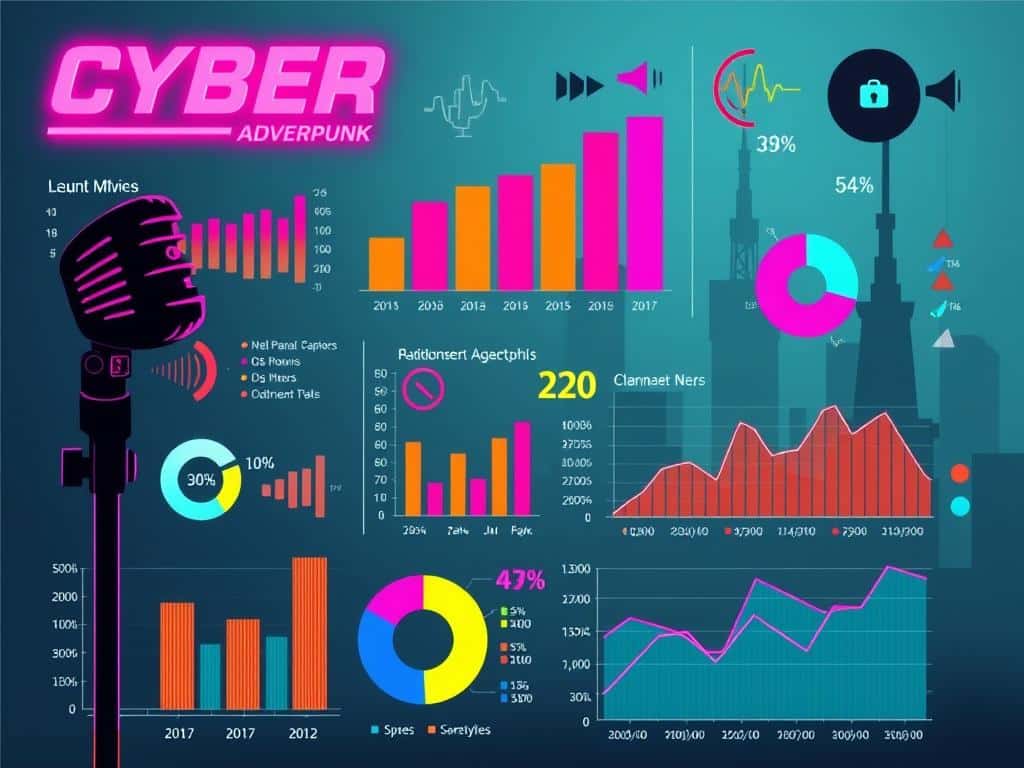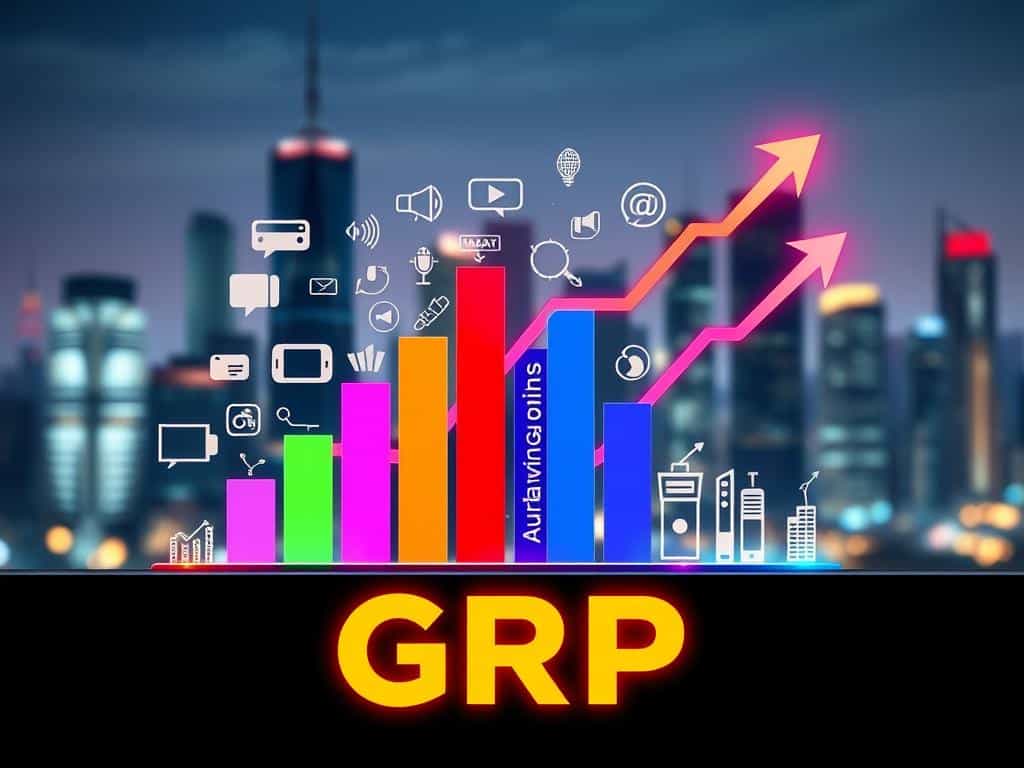Radio advertising remains a powerful medium for reaching broad audiences, capturing attention through sound, and steering clear of distractions common in other channels. With North American radio advertising revenue hitting approximately $16.2 billion in 2023 and projected to increase by 3.7% by 2027, understanding how to measure radio advertising metrics is crucial for your campaign success. To ensure your advertising ROI, you must utilize key performance indicators (KPIs) and modern tools for accurate radio ad tracking.
Common KPIs include reach, frequency, gross rating points (GRPs), cost per point (CPP), and cost per thousand (CPM). Despite the rise of digital marketing, radio still reaches over 80% of people in the US, underlining its relevance for targeting local markets or the general population. Significant challengers remain in measuring radio effectiveness, such as obtaining detailed data compared to digital channels and traditional manual data aggregation.
However, modern solutions like Veritone Attribute offer near-real-time tracking and data-driven insights, optimizing your campaign performance. By leveraging these tools, you can measure essential metrics like total visits, ad visits, total ads, and average ad costs, facilitating better decision-making and enhanced advertising ROI. This approach not only improves campaign results but also strengthens the relationship between radio stations and advertisers.
Understanding Radio Advertising Effectiveness and Impact
Radio advertising has a unique way of reaching over 80% of the U.S. population, making it an essential tool for both targeted local and generalized marketing objectives. Understanding its effectiveness and impact is vital for optimizing your ad campaign effectiveness.
Defining Radio Effectiveness
Radio effectiveness is measured by how well an ad campaign meets specific goals such as increasing web traffic, boosting sales, or enhancing brand recognition. For every pound spent on radio advertising, there is an average revenue return of £7.70, solidifying its value in marketing strategies. Moreover, radio campaigns are 60% more likely to make brands famous compared to other media, highlighting their significance in brand recognition.
Measuring Radio Impact
Measuring the impact of radio ads involves assessing broader audience influence and overall brand perception. Radio ads not only increase online brand browsing by 52% but also lead to a 48% higher awareness among listeners. This underlines the enhanced trust and relevance that radio advertising success can bring to brands. An ad campaign effectiveness can be further tracked using metrics such as click-through rates, conversion rates, and overall customer engagement.
Why Both Metrics Matter
It’s crucial to measure both the effectiveness and impact of radio ads because they collectively provide a comprehensive understanding of your radio advertising success. Aligning these dual measurements with your marketing goals can help in optimizing ad expenditures for the greatest return on investment. With radio paying back £7.70 in increased revenue for every pound spent, second only to TV overall, it becomes evident why continuous assessment and adjustment are necessary for maintaining ad campaign effectiveness.
Identifying and Using Key Performance Indicators (KPIs)
Understanding and utilizing radio KPIs optimizes your advertising strategy, helping you gauge the overall effectiveness and accurately tailor your marketing campaigns to generate higher returns. Here’s a breakdown of the essential KPIs in radio advertising:
Reach
Advertising reach is a pivotal metric that quantifies the number of individuals who have heard your radio ad. This KPI is critical for evaluating the breadth of your ad’s impact within the market. Broadening your advertising reach can amplify your message and engage a more extensive audience.
Frequency
Audience frequency measures the number of times your target audience hears the ad during the campaign period. High frequency enhances brand recall and strengthens the effectiveness of your marketing message, ensuring it stays top-of-mind for potential customers.
Gross Rating Points (GRPs)
Gross Rating Points (GRPs) represent the cumulative impact of your radio ad campaign by considering both reach and frequency. Essentially, it measures the total number of impressions made by your ad, making it an invaluable metric for understanding the overall effectiveness and penetration of your broadcast.
Cost per Point (CPP)
Cost per Point (CPP) provides insights into the cost-effectiveness of your radio ad by calculating the expense required to achieve one GRP. Examining the CPP allows advertisers to better allocate their budgets, ensuring that advertising costs align with campaign objectives while maximizing return on investment.
Cost per Thousand (CPM)
Cost per Thousand (CPM) reflects the cost to reach one thousand listeners with your radio ad. This KPI is instrumental in comparing the cost-efficiency of different radio stations or programs, enabling you to make informed decisions to optimize your advertising costs while maximizing audience engagement.

To effectively measure these KPIs, leveraging automated tools for real-time data collection and analysis is essential. Transitioning from manual aggregation to these advanced solutions ensures more accurate tracking, allowing advertisers to make data-driven decisions for optimized targeting and higher returns on advertising investments.
Challenges in Measuring Radio Advertising Effectiveness
Radio data challenges are significant when it comes to measuring the effectiveness of advertising campaigns. Although radio remains a dominant medium with 91% of American adults tuning in weekly, advertisers face multiple hurdles in tracking ad performance accurately.
Limitations of Traditional Data
Traditional radio advertising metrics lack the depth and granularity offered by digital channels. Historically, advertisers struggled to measure radio ad impact due to data tracking limitations. This often meant relying on manual data collection and interpretation, which could lead to inaccuracies in understanding the return on ad spend (ROAS).
Complexity in Data Correlation
One of the major radio data challenges is the complexity involved in correlating radio advertising efforts with measurable outcomes. Unlike digital ads, where click-through rates and conversions are easily tracked, radio ads depend on indirect performance metrics. For example, businesses may need to correlate website traffic, unique URLs, or call tracking data to determine the radio ad impact. Automated tools like TapClicks have started to alleviate some of these difficulties by aggregating data from various platforms and providing live reporting with custom dashboards.
Manual Data Aggregation Issues
Many advertisers have faced challenges in manually aggregating data from disparate sources. This not only consumes time but also introduces potential errors. The integration of technologies that store data in a unified warehouse and automate report generation can dramatically improve the accuracy and ease of measuring campaign success. However, overcoming these data tracking limitations is crucial for obtaining actionable insights and making more informed advertising decisions.
How To Measure Radio Advertising Effectiveness with Modern Tools
Modern measurement tools have revolutionized how radio advertising effectiveness is assessed. These technological advancements provide real-time web-lift correlation and automate tedious data aggregation, offering a clearer view of radio ad performance. With the development of advanced attribution models, advertisers can trace the effectiveness of their campaigns more accurately.
Tools like Veritone Attribute enable the measurement of broadcast attribution, allowing radio stations to link ad runs directly to spikes in online activity. This provides advertisers with concrete evidence on how radio ads impact consumer behavior.

Advertising analytics have become more comprehensive with modern tools, moving beyond traditional metrics of reach and frequency. They now encompass multi-touch analysis that highlights the role of radio in driving offline sales and brand awareness. For instance, studies by LeadsRx revealed significant increases in website traffic and conversions directly linked to radio spots, with one campaign for a tax preparation service showing a 48% rise in site traffic.
Recent technologies also enhance the efficiency and traceability of radio advertising. The integration of AI and machine learning in measurement tools allows for precise targeting and measurement, optimizing the return on investment (ROI) for advertisers.
- Real-time data insights from advanced tools help track immediate responses to ad campaigns.
- Granular sales data combined with broadcast schedules measure the response generated by each radio ad.
- Surveys and brand lift studies capture the influence of radio on brand perceptions pre- and post-campaign.
In summary, modern measurement tools have made radio advertising more effective and transparent by providing detailed advertising analytics and improving broadcast attribution techniques. This ensures advertisers can accurately assess the impact of their radio campaigns and make data-driven decisions for future strategies.
Methods for Evaluating Radio Ad Campaigns
In today’s marketing landscape, evaluating the success of radio advertisements can be a multifaceted process. Several strategies have proven effective for comprehensive campaign evaluation, giving you valuable insights into your ad’s performance.
Correlate Website or Non-Broadcast Campaign Activity
By tracking activity correlation between your radio ad times and website or store activity, you can gauge the direct impact of the ads on boosting traffic and sales. Monitoring spikes in online activity post-ad can reveal how effective your campaign is in driving engagement. For instance, when an ad airs, immediately observing a surge in website visits or product searches is a positive indicator.
Compare Month-to-Month or Region-to-Region
An excellent way to measure a campaign’s success is to evaluate it over different periods or locations. Comparing sales and engagement month-to-month or from one region to another helps you understand the nuanced effects of your targeted promotions. Regional analysis can indicate where your messages resonate the most, thereby directing future investments more efficiently.
Share Unique URLs, Phone Numbers, or Discounts
Integrating unique campaign elements like custom URLs, specialized phone numbers, or exclusive discounts within your radio ads can significantly aid in direct tracking of responses. This method simplifies the campaign evaluation process by attributing specific leads and sales to the radio ads. It offers clarity on which ads are converting listeners into customers, thereby enhancing your marketing ROI.
Conduct Surveys
Implementing surveys post-campaign is an effective tool for assessing brand awareness and customer recall. Surveys enable you to gather qualitative data on customer perceptions and behavior influenced by your radio ads. Leveraging tools such as Google Forms or SurveyMonkey, you can construct detailed questionnaires that provide actionable insights. Regularly conducting these surveys helps in refining your future targeted promotions.
Automated platforms like TapClicks streamline the process of integrating these various data sources, offering coherent analytics and reporting systems that consolidate every aspect of your campaign evaluation. With such methods, you will have a comprehensive understanding of how your radio ad campaigns perform, facilitating insightful decision-making for future marketing strategies.
The Role of Veritone Attribute in Radio Advertising Measurement
Enhancing the measurement of radio advertising has evolved significantly with the introduction of Veritone Attribute. This advanced broadcast attribution tool provides real-time data insights, enabling you to make informed decisions and optimize campaign ROI. Broadcasters often face challenges in demonstrating the effectiveness of their advertising campaigns. However, with Veritone Attribute, you gain instant access to advertising insights that can inform your marketing strategy and optimize spending across multiple media channels.
Real-Time Data Insights
Veritone Attribute offers near real-time analytics, allowing you to monitor individual customer attribution closely. This capability is particularly valuable when comparing ad delivery and mentions to an advertiser’s website analytics to measure effectiveness. The real-time data insights provided by this tool empower broadcasters to track responses to online calls-to-action more efficiently, addressing the common issue of incomplete attribution data.
Optimizing ROI with Data-Driven Decisions
Using accurate and immediate data from Veritone Attribute, broadcasters can optimize their ad campaigns to achieve higher ROI. AI-based services embedded in the tool have accelerated reporting workflows and empowered sales operations teams to validate ad delivery more effectively. Key features, such as AI transcription and audio fingerprinting, help identify critical insights and detect keywords in recordings. Leveraging these analytics helps optimize campaign strategies and ensures that your marketing program spends are well-informed.
Custom Reporting and Visualization Tools
The custom reporting and visualization tools provided by Veritone Attribute enhance transparency and client engagement. Data-driven dashboards can be shared through auto-generated, branded PDFs and interactive PowerPoint reports. These detailed reports offer web, daypart, placement, and creative analytics that can be easily communicated to advertisers. By leveraging these custom tools, broadcasters can provide empirical data demonstrating campaign performance, helping secure a larger share of ad spend and improve renewals.
For more insights on how Veritone Attribute is transforming radio advertising measurement, read more here.








